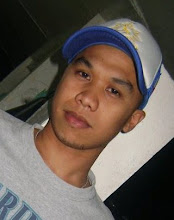

Handicraft is one of our major in our course, we done a lot of project in our course but what i like most is to create or make a stuffed toy out of raw materials. I cant post my personalize stuffed toy because it was blew by the flood, but i can still remember the procedure on how to make a stuffed toy. Here is the procedure on how to make a stuffed toy.
Tips:
◦Check for quality. The fur should brush downward, the eyes aligned, and the nose on the right spot.
◦Trace the patterns correctly. Cutting cloth that has been wrongly traced is a costly mistake.
Materials Needed:
◦Cardboards or recycled folders for pattern making
◦1/6 yard of long fur plush cloth preferably in shades of brown or beige
◦1/10 kilo of silicon fiber fill for stuffing
◦A pair of #16 plastic eyes with lock
◦A piece of #16 plastic nose with lock
◦A yard of half-inch wide ribbon
◦Pencil or permanent marker for tracing patterns
◦One lot of cotton thread
◦Scissors
◦Pins
◦2.5 inch long needles
◦Cutter
PROCEDURES:
1.Use the cardboards or recycled folders to make a pattern for the stuffed toy. You may get ideas from the internet or from books or magazines then incorporate your own design.
2.Trace the pattern using a pencil or permanent marker, and make sure you label the pieces before cutting them. The pattern should also indicate whether or not it will be traced twice on the cloth to form a pair (such as ears, face, body, etc.), using labels such as “cut 1″ or “cut 2″.
3.Put arrows on your pattern to indicate direction when you attach the parts while sewing. Broken lines can also be used near the edge of the patterns to place pins, while letters can indicate which side or body part should be attached to another body part.
4.When the patterns are cut and labeled, start tracing them onto the interior of the plush cloth material. Layout all the patterns on the cloth, following the directions of the arrows and the labels on them. Maximize every part of the cloth and take note of patterns that need to be traced twice.
5.Cut the plush cloth with only the tip of our scissors to avoid damaging the fur. Join the pieces together by hand sewing it or with the use of a machine. Use a similar colored thread or opt for a white since the plush material will cover the thread anyway.
6.Choose which body part to attach first. For this project, start attaching parts to be two sides of the body by securing the plush cloth to each other using pins. Make sure that the parts are attached to the correct side of the cloth. If sewing by hand, use either blanket or back-stitching.
7.After attaching the cloth pieces, pin them to the cloth that will be used for the lower part of the body. Give 1/8″ allowance on the hemline when fastening them with pins. Sew the parts together and then tun the material inside out.
8.Prepare the parts for the face and head. Assemble the ears by securing them with pins, sewing them and then turning the cloth inside out. With pins, attach the ears to two cloth pieces cut to make the stuffed animal’s face and then sew. Attach this piece to the head gusset.
9.To make the nose, sew the two cuts together. Allow space to make tucks in the upper part of the two cuts and then attach it to the gusset to complete the head. Turn the material inside out to check if the parts are aligned properly, if not, correct them by sewing some more.
10.Mark the spot where the eyes and nose will be fastened. The technique is to hold the plastic eye in place, then make a slit using scissors or a cutter in the spot for inserting the eye. Fasten the eyes by putting its locks inside the cloth.
11.Do the same for attaching the nose. Make the slit just above the tucks.
12.Finally, stuff the assembled head and body parts with silicon fiber. Make sure that no space is left unfilled. The amount of silicon you put would depend on how soft you want your toy to be. Then connect the head and body parts by stitching them manually.
13.Tie ribbons around the neck or by the ears.











